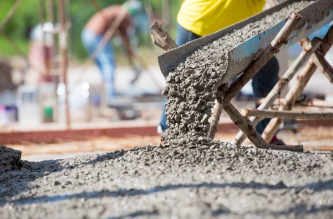Scientists Develop Edible Cement: A Sustainable Solution from Food Waste

[Editor’s Note: This article is part of our ongoing series exploring recycling innovations worldwide for a safer, cleaner environment.]
In an innovative breakthrough, scientists in Japan have discovered a way to turn food waste into a new type of cement that could revolutionize both the construction industry and waste management, according to a BBC news report. The research, conducted by the University of Tokyo, showcases a concrete-like material made entirely from food waste. This advancement helps reduce food waste and could play a pivotal role in lowering global carbon emissions linked to traditional cement production.
A New Kind of Building Material
The idea of turning food into building material might sound like something from a fairy tale, but the science behind it is fascinating. Researchers explored a range of food waste, including banana peels, orange peels, onions, tea leaves, coffee grounds, and even seaweed. These waste items were dried, powdered, and heat-pressed in molds to form a material as strong—if not stronger—than conventional cement.
One surprising discovery was that cabbage, in particular, produced a material four times stronger than traditional cement. This could open up exciting new possibilities for sustainable construction, especially in emergencies or disasters where food scarcity is an issue. Relief workers could build shelters quickly using this biodegradable cement, but in extreme circumstances, these structures could also be ground down and consumed, offering both protection and sustenance.
Tackling Global Issues: Food Waste and Carbon Emissions
Food waste is a major global concern, with millions of tons discarded annually. In the UK alone, consumers throw away an estimated 900,000 bananas daily. At the same time, the production of cement, a staple in the construction industry, accounts for nearly 10% of the world’s carbon dioxide emissions, a significant contributor to climate change.
The introduction of edible cement offers a potential solution to both problems. By repurposing food waste, the new cement reduces the strain on landfills while lowering the environmental impact of cement production. Moreover, the biodegradable nature of this material means it could naturally decompose when no longer needed, further mitigating its environmental footprint.
Future Possibilities
While edible cement may not replace traditional building materials entirely, it represents a step forward in eco-friendly construction. The potential for its use in disaster relief situations, where both food and shelter are critical, makes it a promising solution for future challenges. With further research and development, this breakthrough could pave the way for a more sustainable world where buildings are green and potentially edible.

